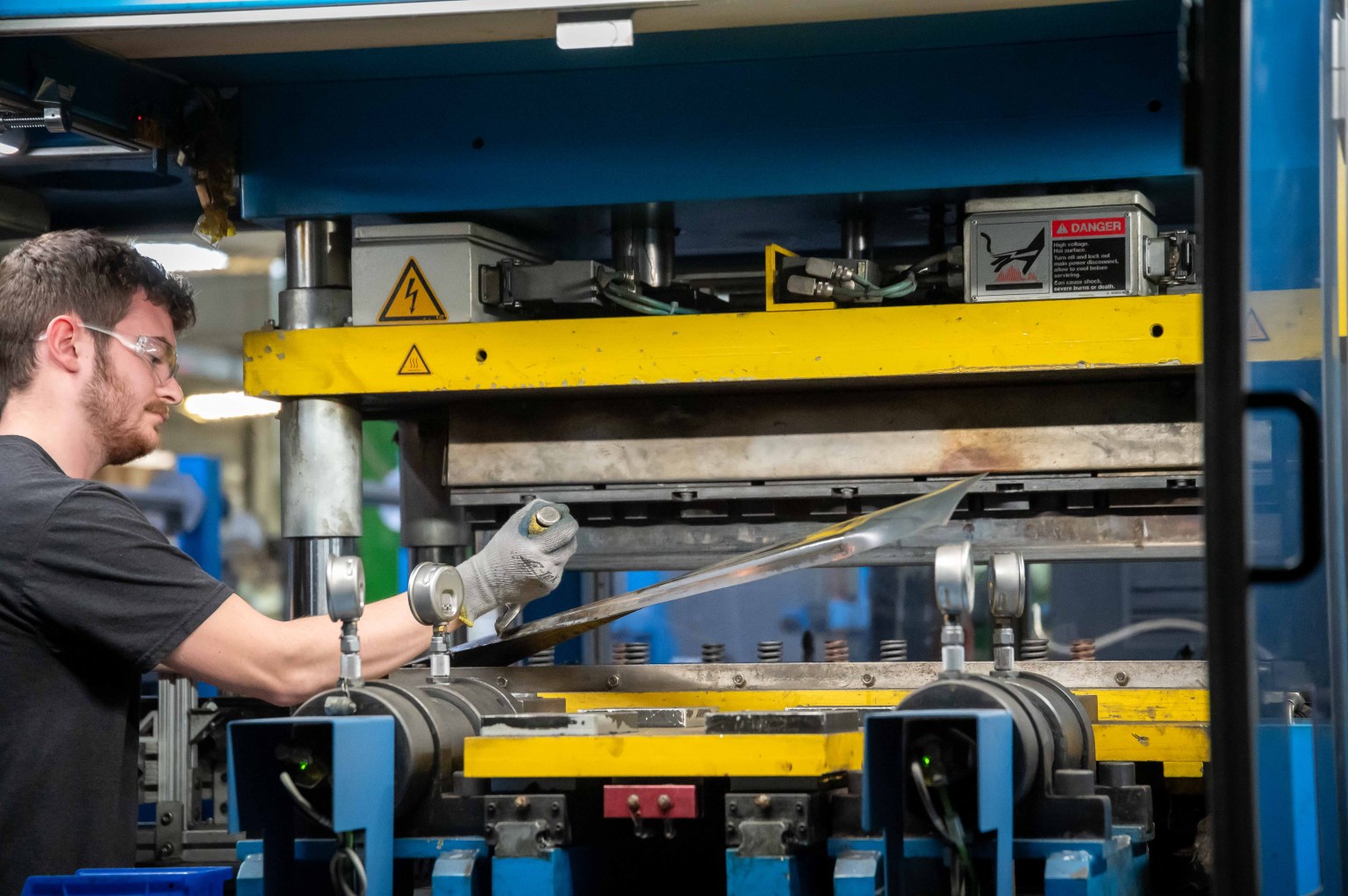August 7, 2024
The aerospace industry is constantly evolving, driven by the need for lighter, stronger, and more cost-effective materials. One such material that has gained significant traction is thermoplastic composites. These advanced materials are playing a critical role in modern aerospace manufacturing, offering a combination of benefits that make them indispensable for the next generation of aircraft. In this blog, we’ll explore what thermoplastic composites are, why they are used in the aerospace industry, the types of materials involved, and the parts that are produced using these innovative materials.
Solutions that Move the Needle: Connect with our team today to discuss your next aerospace manufacturing project.

Thermoplastic composites are a class of materials composed of reinforcing fibers embedded in a thermoplastic resin matrix. The fibers, typically made from materials like carbon or glass, provide strength and stiffness, while the thermoplastic resin holds the fibers together and gives the composite the ability to be molded into the desired shape. Unlike thermoset composites, which harden permanently when cured, thermoplastic composites can be reheated and reshaped, offering greater flexibility in manufacturing and repair processes.
One of the primary reasons thermoplastic composites are favored in the aerospace industry is their exceptional strength-to-weight ratio. Aircraft designers are always seeking ways to reduce weight while maintaining structural integrity, as lighter aircraft consume less fuel and perform better. Thermoplastic composites provide the perfect solution by offering high strength and stiffness with significantly less weight compared to more traditional metal materials.
Aerospace components must withstand harsh conditions, including extreme temperatures, high pressures, and mechanical stress. Thermoplastic composites are highly resistant to impact, fatigue, and environmental factors such as moisture and UV radiation. This durability ensures that components made from these materials maintain their performance over time, reducing the need for frequent maintenance and replacements.
Thermoplastic composites offer significant advantages in terms of manufacturing efficiency. They can be processed in shorter cycle times compared to thermoset composites, leading to faster production rates. Additionally, the ability to reshape and repair thermoplastic composites by reheating them makes them more versatile and cost-effective. This is particularly valuable in aerospace, where the ability to make quick repairs can reduce downtime and theoretically keep aircraft in service longer.
As the aerospace industry places increasing emphasis on sustainability, thermoplastic composites stand out for their recyclability. Unlike thermoset composites, which are difficult to recycle, thermoplastics can be remelted and reused in new applications. This reduces waste and contributes to more sustainable manufacturing practices, aligning with the industry’s goals of reducing its environmental impact.
Carbon fiber is one of the most common reinforcement materials used in thermoplastic composites, known for its exceptional strength-to-weight ratios. Custom carbon fiber parts are widely used in structural applications where high performance is required, such as in fuselage panels, wing spars, and other critical aircraft components.
Glass fiber is another popular reinforcement material, offering a good balance between cost and performance. Glass fiber thermoplastic parts are often used in applications where moderate strength and stiffness are needed, such as in interior components and secondary structures. Their lower cost compared to carbon fiber makes them an attractive option for non-critical parts.
In addition to carbon and glass fibers, other materials like aramid fibers are used in thermoplastic composites for specific applications. Aramid fibers, for example, are known for their excellent impact resistance and are used in applications requiring high durability, such as protective gear and other aerospace parts such as brackets, c-channels, secondary structures and interior components.
Thermoplastic composites are used extensively in the production of structural components for aircraft, including fuselage panels, wing spars, ribs, and other critical parts. The lightweight nature of these materials contributes to significant weight savings, improving fuel efficiency and overall aircraft performance.
In the cabin, thermoplastic composites are used to manufacture seats, luggage compartments, cabin flooring, and other interior elements. These materials offer durability, design flexibility, and the ability to withstand the wear and tear of everyday use while reducing the overall weight of the aircraft.
While thermoplastic composites are not typically thought of when it comes to engines, high temperature thermoplastic parts are making significant in-roads into engine applications and rotating parts for both structural integrity and temperature resistance. Their heat resistance and durability make them suitable for components that require both strength and lightweight properties.
Thermoplastic composites are also used in the housing for avionics and other electrical systems. Their insulating properties, combined with their lightweight and durable nature, make them ideal for protecting sensitive electronic equipment in demanding aerospace environments.
At Re:Build Cutting Dynamics, our expertise in thermoplastic composite manufacturing means we deliver high-quality components that meet the demanding requirements of the aerospace industry. We have deep experience working with a large number of thermoplastics used in composites — and with both carbon and glass fibers — including:
We have a long list of production capabilities and all our work adheres to the certifications that govern the aerospace industry. From hydroforming and hot forming titanium to assembly and kitting, Re:Build Cutting Dynamics provides everything you need for a one-stop shop partner for all of your aerospace and defense manufacturing requirements.
Ready to implement more thermoplastic composites into your aerospace manufacturing projects? Connect with our team today to learn more.
Our team at Re:Build Cutting Dynamics wants to ensure that all your questions regarding thermoplastic composites in aerospace manufacturing have been answered. With that in mind, feel free to contact us today with any questions you may have, as we look forward to assisting you.